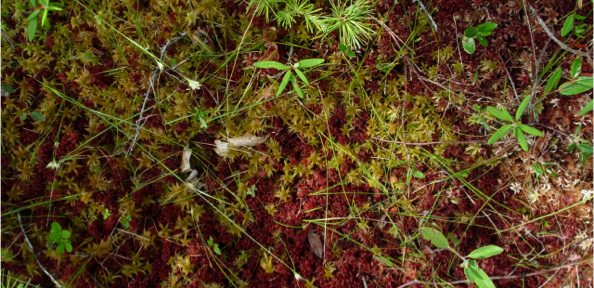By Laurel Hamers ’14
 Williams College Professor of Biology Joan Edwards oozes excitement about plants, able to turn a subject that most associate with endless Latin names and obscure botanical terminology into a fascinating examination of the unique characteristics (personalities, almost) of different plant species and the unexpected ways in which they adapt to their environment. Her research focuses on the mechanisms by which plants increase their reproductive success through adaptations for pollination and seed dispersal. In particular, she is interested in what she describes as “ultra-fast plant movement.” Edwards acknowledges the seemingly contradictory nature of the terminology. “You never think of plants as doing anything fast,” she says, “but they do—and they can do things extraordinarily fast.”
Williams College Professor of Biology Joan Edwards oozes excitement about plants, able to turn a subject that most associate with endless Latin names and obscure botanical terminology into a fascinating examination of the unique characteristics (personalities, almost) of different plant species and the unexpected ways in which they adapt to their environment. Her research focuses on the mechanisms by which plants increase their reproductive success through adaptations for pollination and seed dispersal. In particular, she is interested in what she describes as “ultra-fast plant movement.” Edwards acknowledges the seemingly contradictory nature of the terminology. “You never think of plants as doing anything fast,” she says, “but they do—and they can do things extraordinarily fast.”
Edwards has a proven track record of catching plants in action. She made national headlines in 2005 for her Nature paper on the bunchberry dogwood, Cornus canadensis—its flowers burst open in less than 0.4 milliseconds, catapulting pollen high into the air with more acceleration than a rocket lifting off. The movement is so fast that the unaided eye cannot see the explosion. With a high-speed video camera in her lab, however, Edwards was able to observe the process in slow motion. Cornus canadensis now holds the world record for the fastest-known flower opening.
Sphagnum, the subject of Edwards’ more recent research, also possesses an ingenious biomechanical mechanism. Most plants that rely on wind to disperse their seeds have vascular tissue. Vascular tissue works against gravity, drawing water and sugars up to the top of the plant and consequently allowing the plant to grow taller. Their height gives these plants a reproductive advantage—a seed or spore released higher up will travel farther on the wind.

But Sphagnum, a genus of moss that carpets over 1% of the land on earth, is a non-vascular plant. In order to disperse its spores, it must propel them high enough into the air that they will be caught by updrafts. When Edwards and her colleague Dwight Whitaker of Pomona College recorded Sphagnum’s spore dispersal using a high-speed video camera, they discovered that the plant doesn’t just launch its spores in the air. Instead, the vigorous explosion of the spore capsule creates turbulent vortex rings, mushroom cloud-shaped air circulation patterns that allow the spores to be kept aloft longer and travel further.

When the round spore capsule dehydrates in the sunlight and becomes cylindrical, the increase in internal air pressure forces the cap off and shoots a mushroom cloud of spores to a height over 10 centimeters. In contrast, spores simply projected at the same initial velocity would reach a maximum height of just a few millimeters before floating down. The rapid spore release from circular opening of the capsule generates a donut-shaped ring of air that allows the spores to be carried away by drafts of wind. “This is the only vortex ring reported in the plant world,” said Edwards. “There are genomes of sphagnum that cover from Washington up to Alaska, like a giant clone with identical genes….It’s a very effective mechanism.”
While some may see botany as an antiquated field with little direct relevance to modern human life, Edwards sees in it great potential for biomechanical inspiration. “[Plants] worked [these mechanisms] out long before we did, so I think that we can take hints from them if we want to do biomimicry.” All we need to do, it seems, is pay attention.
